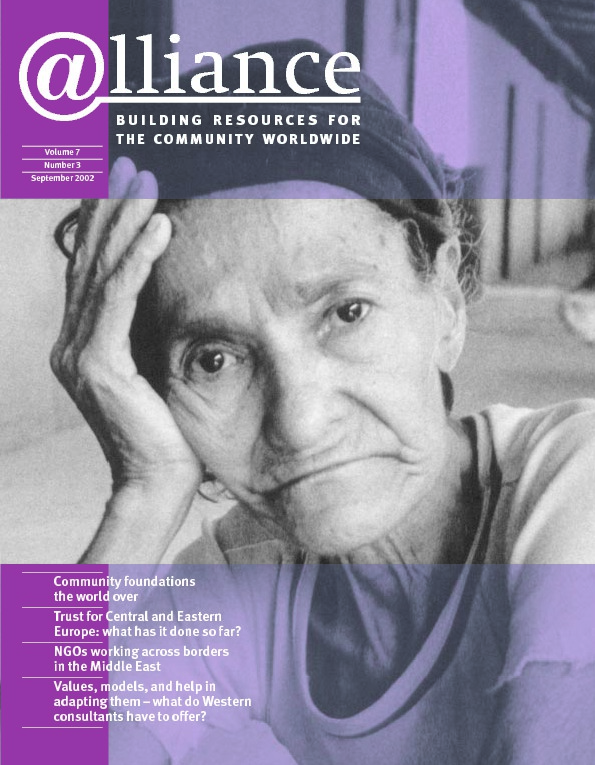Unlike in developed countries, formation of a community development foundation in a developing country does not necessarily depend on availability of funds from a philanthropic source. A recent study[1] found that they were formed by both local and international partners who were looking for more effective ways to deal with local development issues like poverty. They tend to focus on community economic development issues like poverty reduction and building of democratic institutions – hence the word ‘development’ in the term ‘community development foundation’.
In most cases these emerging community development foundations (CDFs) are seeking ways to adapt the traditional US community foundation concept to their political, social and economic contexts without the supporting structures that exist in other countries. Inclusion of different stakeholders in the process is seen as critical. Another important consideration is the need to ensure that CDFs add value by filling gaps in local development – gaps which may be met by governments in developed countries. This means that the focus is different in each country.
Building a common agenda
Development of a new organization can be slow. CDFs often seek to address long-standing structural problems, and it can take a long time to build a consensus around the issues to be addressed. Many target issues relating to marginalized populations, who have been excluded from the mainstream of development in many countries. All this requires a new way of thinking about development and a new dependence on partnerships to achieve the desired goals.
As the agenda of CDFs is mainly influenced by local needs, deliberate efforts are needed to involve communities and other important stakeholders like the public and private sector. There has been, in most cases, a clear shift away from ensuring donors’ wishes are fulfilled to building a consensus on what the real problems are and how best to solve them. Further, the complexity of the issues to be addressed necessitates multifaceted approaches.
Composition of the board
At the governance level, both traditional community foundations and emerging CDFs aim to have a representative board of directors. For most CDFs, however, partnerships with the private and public sectors are seen as crucial to their success, and ideally the composition of the board will reflect this. With more traditional community foundations, particularly in the US, partnerships seems to be more skewed towards partnerships with individuals/donors. These cross-sector partnerships are also seen as key in getting others to be involved in community-wide development issues.
In developing countries the composition of the board is greatly influenced by the area covered by the foundation and the socio-political and economic circumstances of the country. Where the foundation covers a country, board composition will be based largely on factors like knowledge of community development, involvement in private and public sectors, and representation from different parts of the country.
In developing countries, the skill mix required for board members is often difficult to achieve. Private and public sector partners may not have adequate knowledge of community needs to help with grantmaking but may have the credibility needed to access donors and the financial skills to oversee funds. Conversely, community development practioners, who usually understand community needs and have the expertise needed to implement programmes and manage the foundation, lack these qualities. In most cases, the board will be engaged in a long learning process, which can further slow down the establishment of the foundation.
While endowment-building is a central attraction and defining characteristic of the traditional community foundation model, it is a new concept in developing countries. Further, most CDFs are initially preoccupied with the need to address pressing political, social and economic issues. All these factors mean that endowment-building may take a back seat or endowments take much longer to build than in traditional community foundations.
Another important difference relates to donor services. While traditional community foundations work closely with donors to provide diverse and flexible opportunities for giving, in developing countries there is more concentration on programme-building, with the donor services emerging only slowly.
1 Joyce Malombe (2000) Community Development Foundations: Emerging partnerships World Bank.
Dr Joyce Malombe is based at Southern New Hampshire University. She can be contacted at j.malombe@snhu.edu


Comments (0)